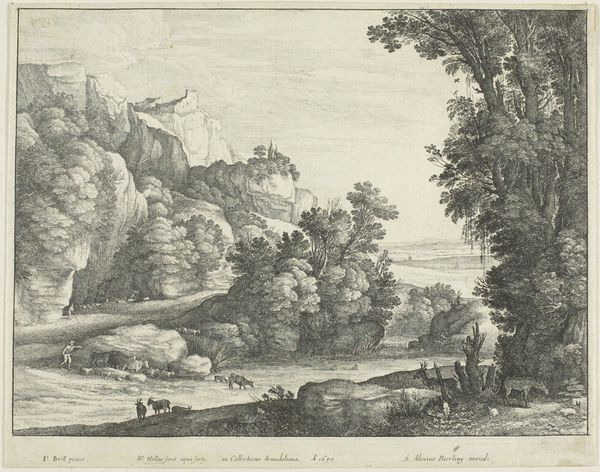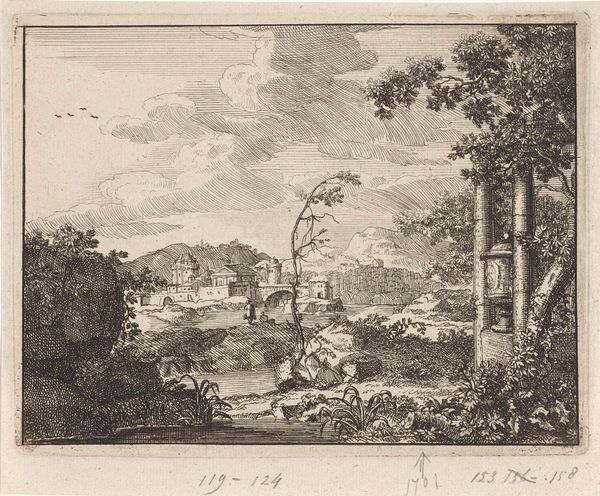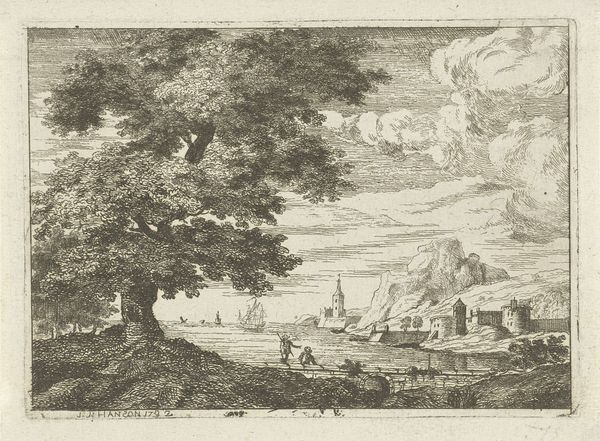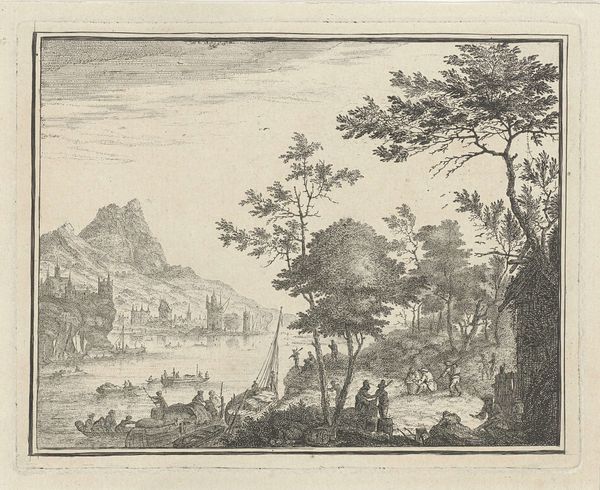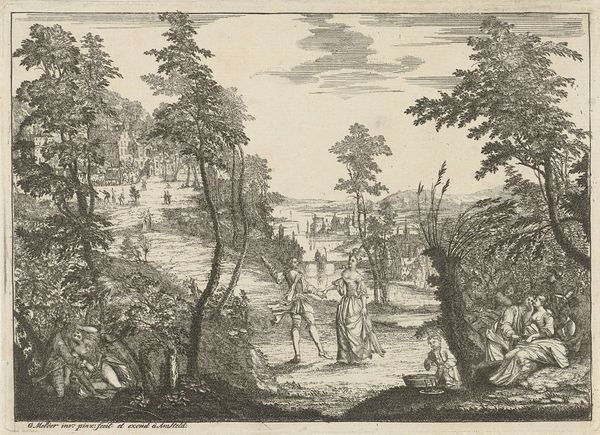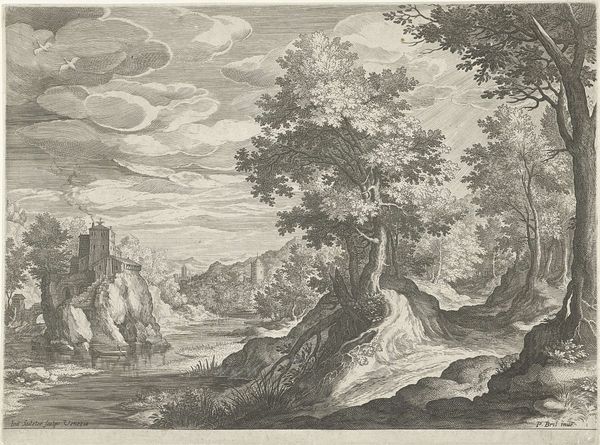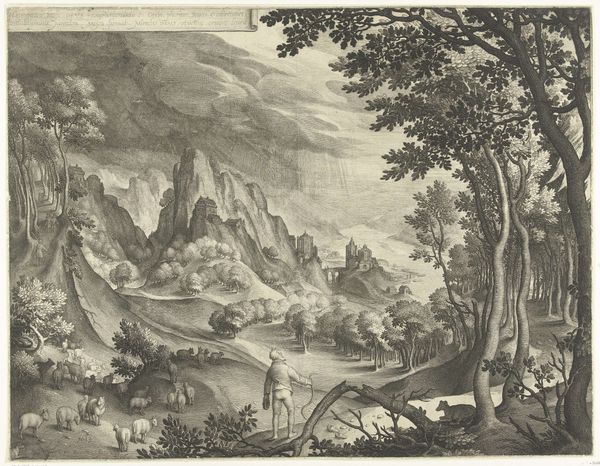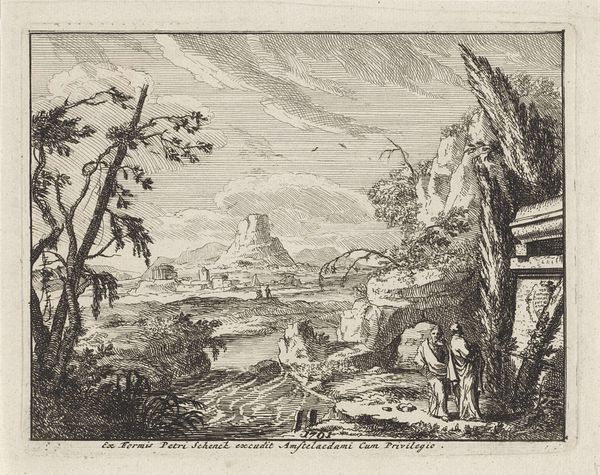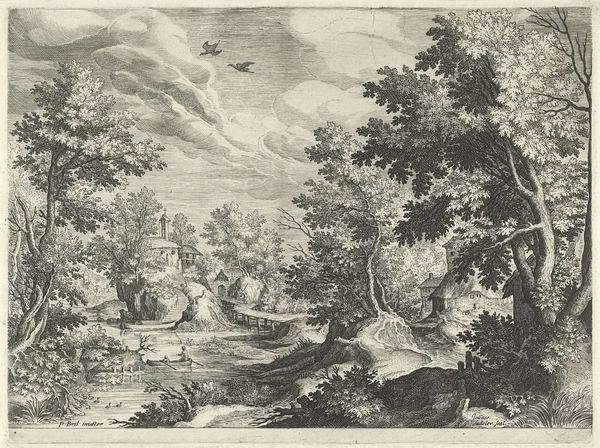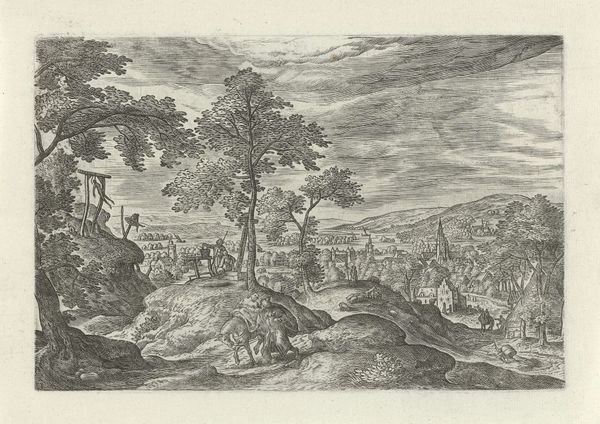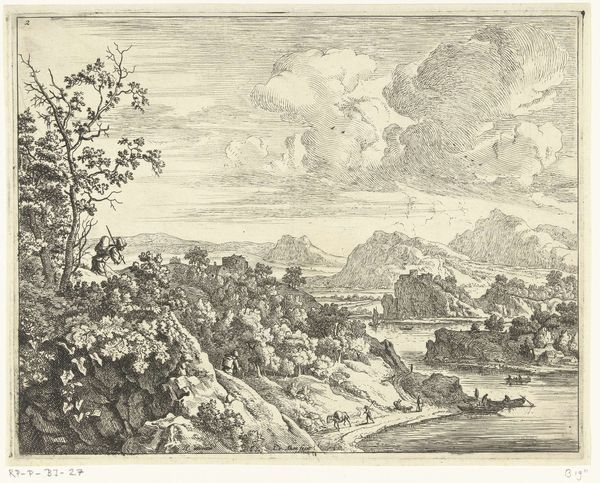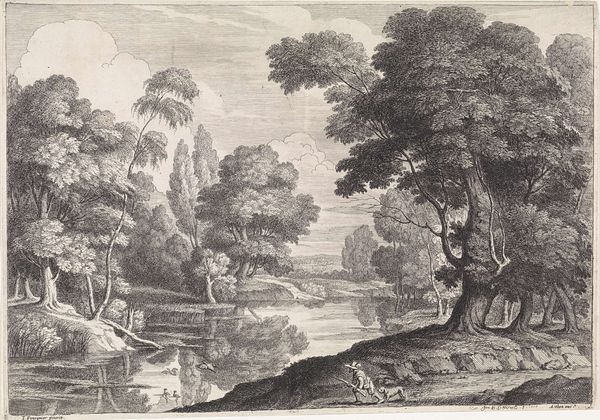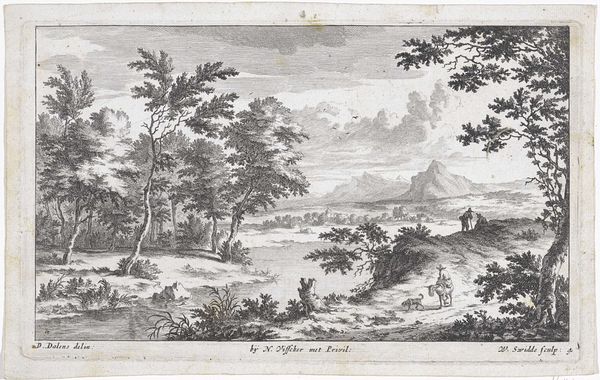
etching
#
baroque
#
pen sketch
#
etching
#
landscape
#
river
#
rock
#
line
#
realism
Dimensions: height 126 mm, width 162 mm
Copyright: Rijks Museum: Open Domain
Editor: Here we have a work from 1701, "River Landscape with Pine Trees and Walkers," by an anonymous artist. It's an etching, which gives it a very detailed, linear feel. The mood seems both serene and a little lonely, with these tiny figures dwarfed by the landscape. What strikes you about this piece? Curator: The most striking element for me is its simultaneous embrace of realism and baroque drama. Look at how the social function of landscape imagery was changing! These weren't just backdrops anymore. Etchings like these circulated widely, democratizing access to landscape imagery and influencing public perception. Notice how the anonymous artist positions ordinary people in this scene, walking and resting, within this idealized vista. Why do you think such landscapes became popular in the early 18th century? Editor: Maybe because of increased urbanization? People felt disconnected from nature and wanted to see idealized versions of it? Curator: Precisely! And what do you see in the composition that emphasizes or downplays any potential drama? Consider where your eye goes first. Editor: My eye goes to the large rock formation in the background and then to the fallen tree in the foreground. They seem to balance each other and create a sense of depth. Also, the etching technique allows for this incredibly fine detail, doesn’t it? It makes it seem more realistic despite being an idealized scene. Curator: Absolutely. Etching was vital for the spread of aesthetic values in a rapidly changing society. But did prints such as this shape people's experiences or reflect it? How aware are we of the art's public role today? Editor: Wow, I hadn't considered how widely accessible prints like these were, and how that impacted society at the time! Curator: The Rijksmuseum holds this fascinating document from early modern life – one with lasting legacy.
Comments
No comments
Be the first to comment and join the conversation on the ultimate creative platform.
